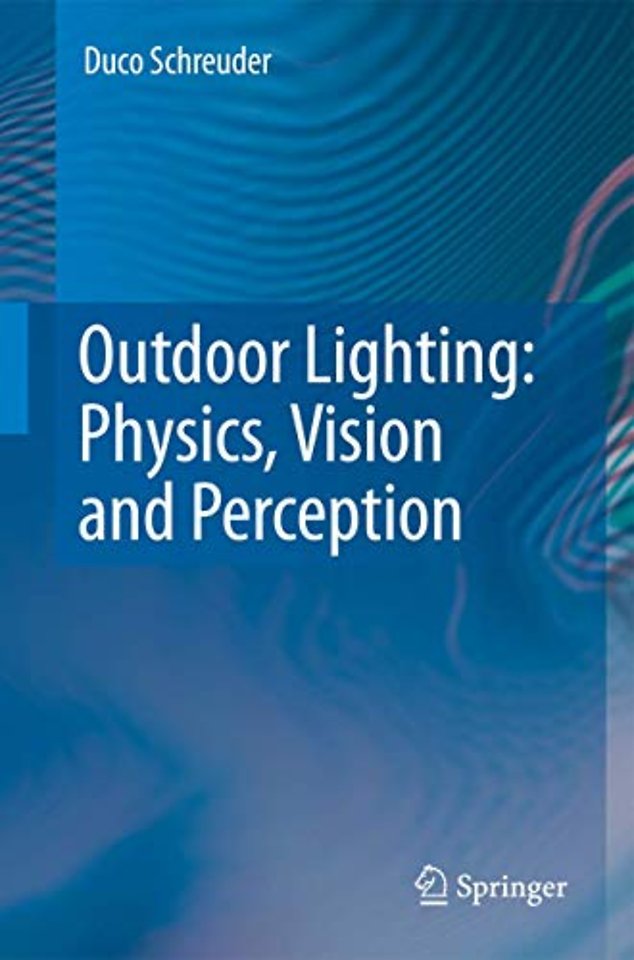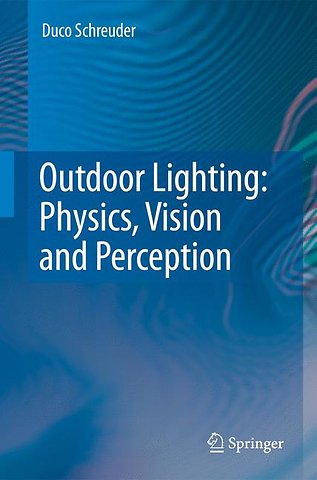Outdoor Lighting: Physics, Vision and Perception
Paperback Engels 2010 9789048179305Samenvatting
The present book is based on the experience of the author. The experience is mainly the result of years of research, of consulting work, and in participation in policy decision making in many felds, most, but not all, related to outdoor lighting. To some degree, the book represents the preference of the author. The selection of the subjects is based on more than 50 years of experience of what is desirable to know for persons engaged in scientifc research or practical application in the felds of lighting and vision. The subjects deal with a number of fundamental aspects. The theorists must have them at their fngertips, whereas the practical engineers may assume them as known in their daily work. The selection of subjects is based in part by the questions that came to the author over the years, but even more by the preference of the author himself. In this respect, it is a personal book. Thus, it should be stressed that the book is not a ‘handbook’ or even a ‘textbook’; many subjects that commonly are treated in such books are not included here. Not because they lack importance, but because the author feels that they are adequately treated elsewhere. Some relevant works are mentioned in the References. Over the years, the author has been engaged in giving courses on vision and lighting, lately more in particular on Masterclasses on a post-graduate or post-doctorate level.
Specificaties
Lezersrecensies
Inhoudsopgave
1: Introduction: The function of outdoor lighting 1.1 Why lighting outdoors? 1.2 Lighting engineering 1.3 The function of outdoor lighting 1.4 Cognitive aspects of vision 1.5 Tools and methods 1.6 Conclusions
2: Physical aspects of light production 2.1 The physics of light 2.2 General aspects of light production 2.3 Incandescence 2.4 Gas-discharge lamps 2.5 Semiconductor light. 2.6 Conclusions
3: Radiometry and photometry 3.1 Radiometry 3.2 Basic photometric concepts 3.3 Conclusions
4: The mathematics of luminance 4.1 The field concept 4.2 Some aspects of hydrodynamics 4.3 The luminance of real and virtual objects 4.4 The luminance of reflecting surfaces 4.5 Conclusions
5: Practical Photometry 5.1 General aspects of photometry 5.2 Traditional subjective photometry 5.3 Traditional objective photometry 5.4 Modern objective photometry 5.5 Conclusions
6: The human observer; physical and anatomical aspects of vision 6.1 The ability to see 6.2 The nervous system 6.3 The anatomy of the human visual system 6.4 The optical nerve tracts 6.5 Conclusions
7: The human observer; visual performance aspects 7.1 The functions of the human visual system 7.2 The sensitivity of the human visual system 7.3 Visual performance 7.4 The primary visual functions 7.5 Conclusions
8: The human observer; visual perception 8.1 Derived visual functions 8.2 Blinding glare 8.3 Disability glare 8.4 Discomfort glare 8.5 Conclusions
9: The human observer; colour vision 9.1 Colour aspects 9.2 Colour vision physiology 9.3 Colour metrics and colorimetry 9.4 The colour characteristics of light sources 9.5 Conclusions
10: Road lighting applications 10.1 Geometric optics 10.2 Luminaire design 10.3 Light pollution 10.4 Reflection properties of road surfaces 10.5 Conclusions
11: Roadlighting design 11.1 Design methods for road lighting installations11.2 Road lighting for developing countries 11.3 Simplified design methods 11.4 Conclusions
References
Subject Index
Rubrieken
- advisering
- algemeen management
- coaching en trainen
- communicatie en media
- economie
- financieel management
- inkoop en logistiek
- internet en social media
- it-management / ict
- juridisch
- leiderschap
- marketing
- mens en maatschappij
- non-profit
- ondernemen
- organisatiekunde
- personal finance
- personeelsmanagement
- persoonlijke effectiviteit
- projectmanagement
- psychologie
- reclame en verkoop
- strategisch management
- verandermanagement
- werk en loopbaan

